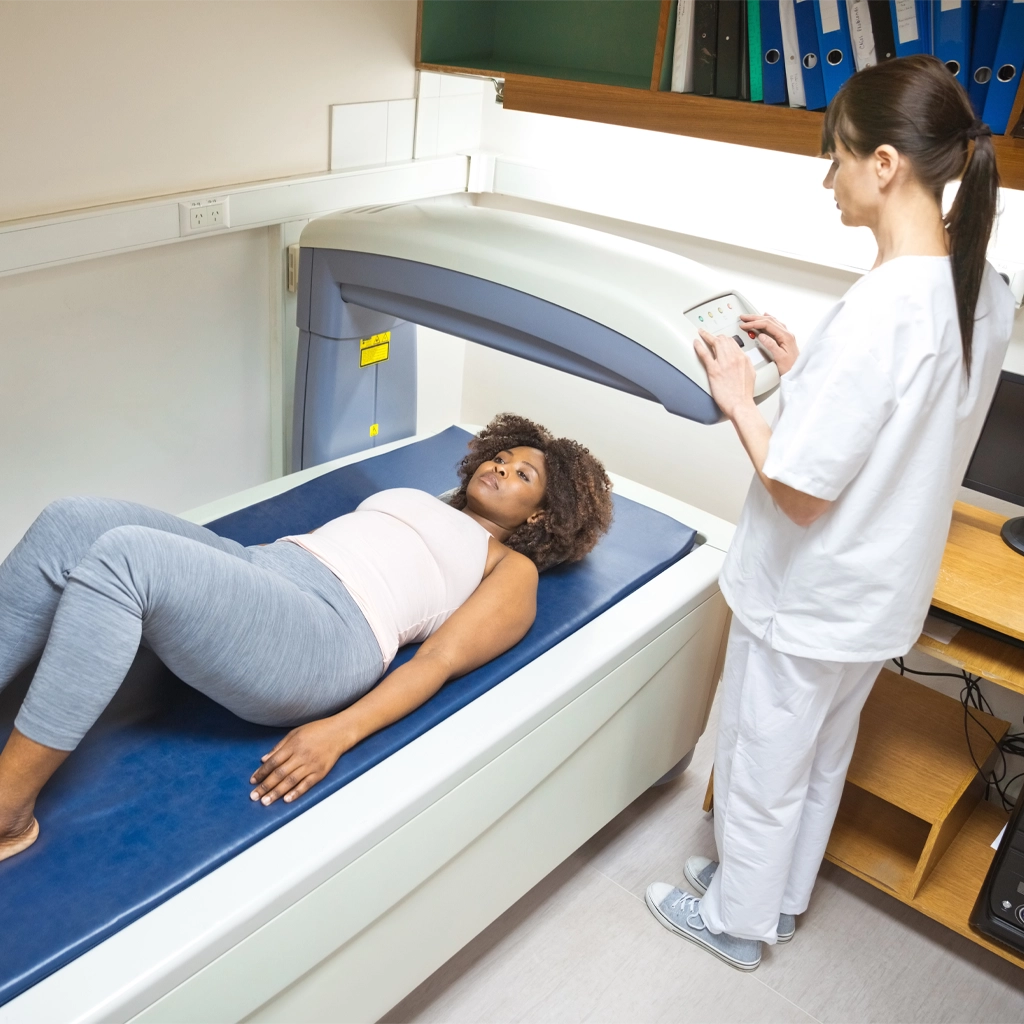What is bone densitometry?
Bone density scanning, also called dual-energy x-ray absorptiometry (DXA) or bone densitometry, is an enhanced form of x-ray technology that is used to measure bone loss. DXA is today’s established standard for measuring bone mineral density (BMD).
DXA is used to determine the density of your bones. It is most often performed on the lower spine and hips. Peripheral devices that use x-ray or ultrasound are sometimes used to screen for low bone mass. In some communities, a CT scan with special software can also be used to diagnose or monitor low bone mass (called QCT). This is an accurate but less commonly used than DXA scanning.
Why do I need a DXA scan?
As we age our bones can become brittle and porous. Osteoporosis is a disease in which the body’s bones become extremely porous and brittle and is a leading cause of disability among older people, particularly women. Bones weakened by mineral loss are prone to fractures, especially in the spine and hip. This is especially common in women following menopause. Even though osteoporosis is typically believed to be an issue only for women, men are prone to developing the disease as well. It is important for patients to understand this disease in order to help prevent bone loss.
Preparation for DXA Bone Densitometry
Metal in the area to be scanned should be removed prior to the exam by your physician. Do not take calcium supplements the day of your exam.
Exam Time
The exam takes 20-30 minutes.
Exam Results
After your exam, the radiologist will review your images, and a report will be sent directly to your physician. Reports are available within 24 to 72 hours.
